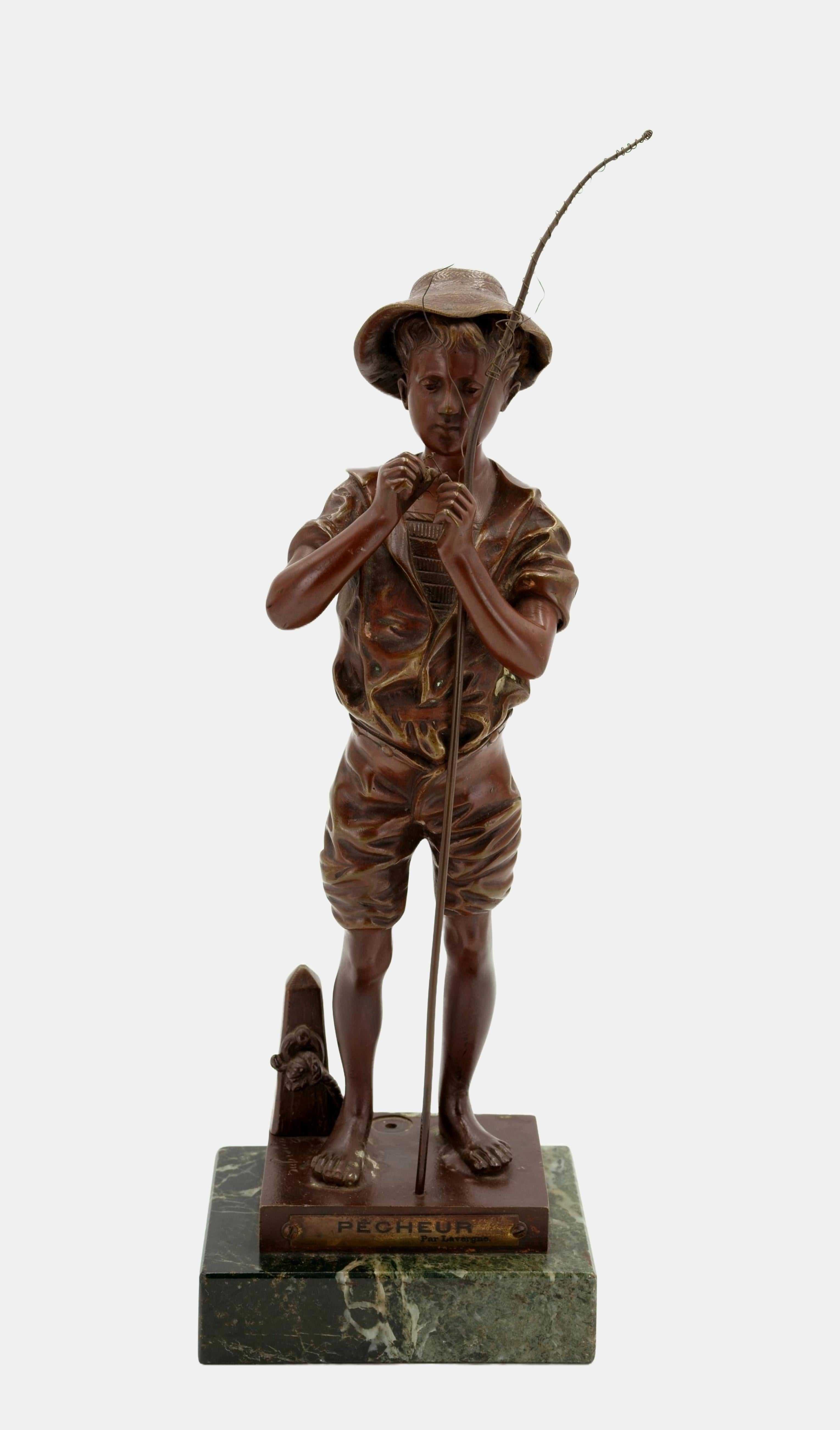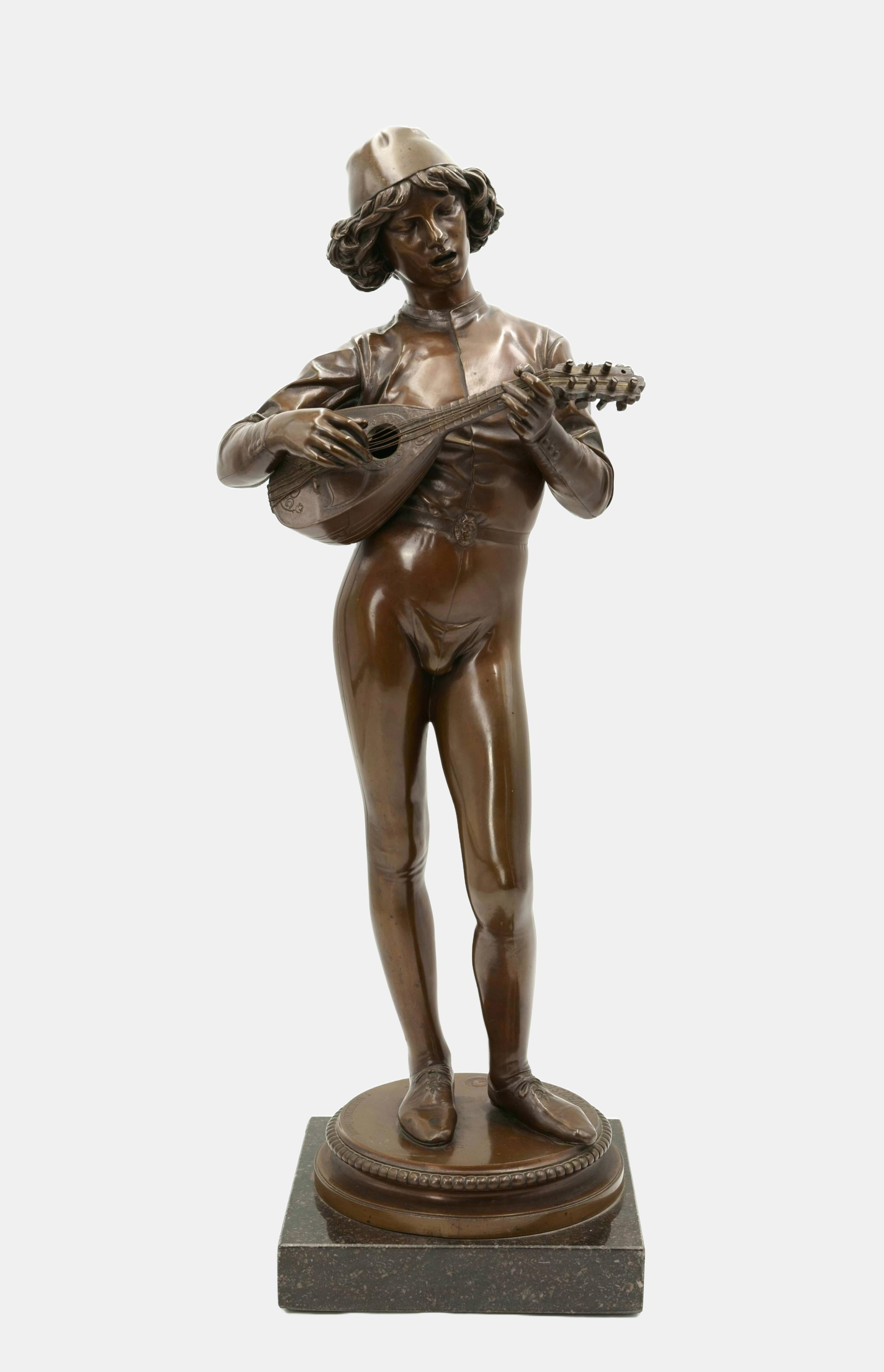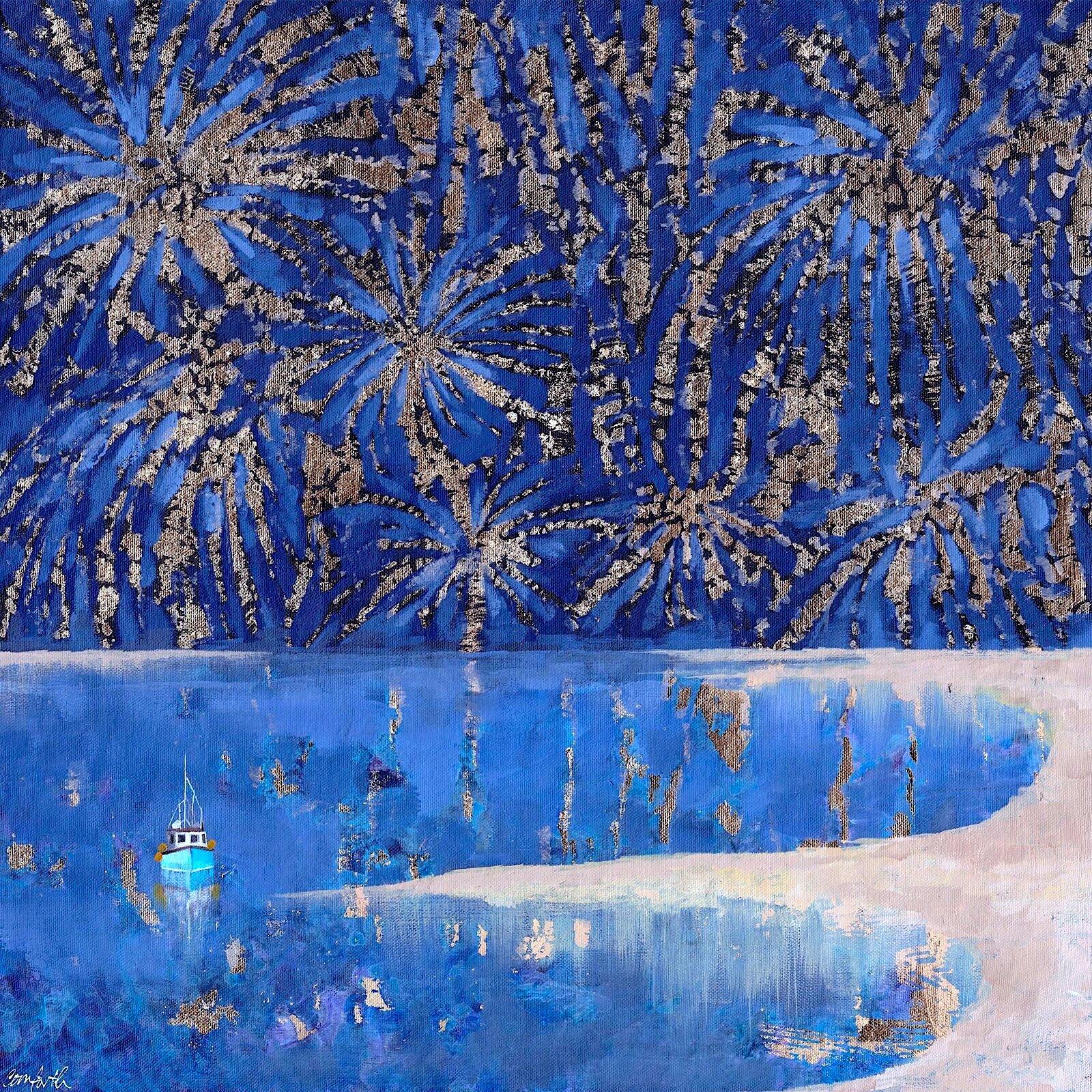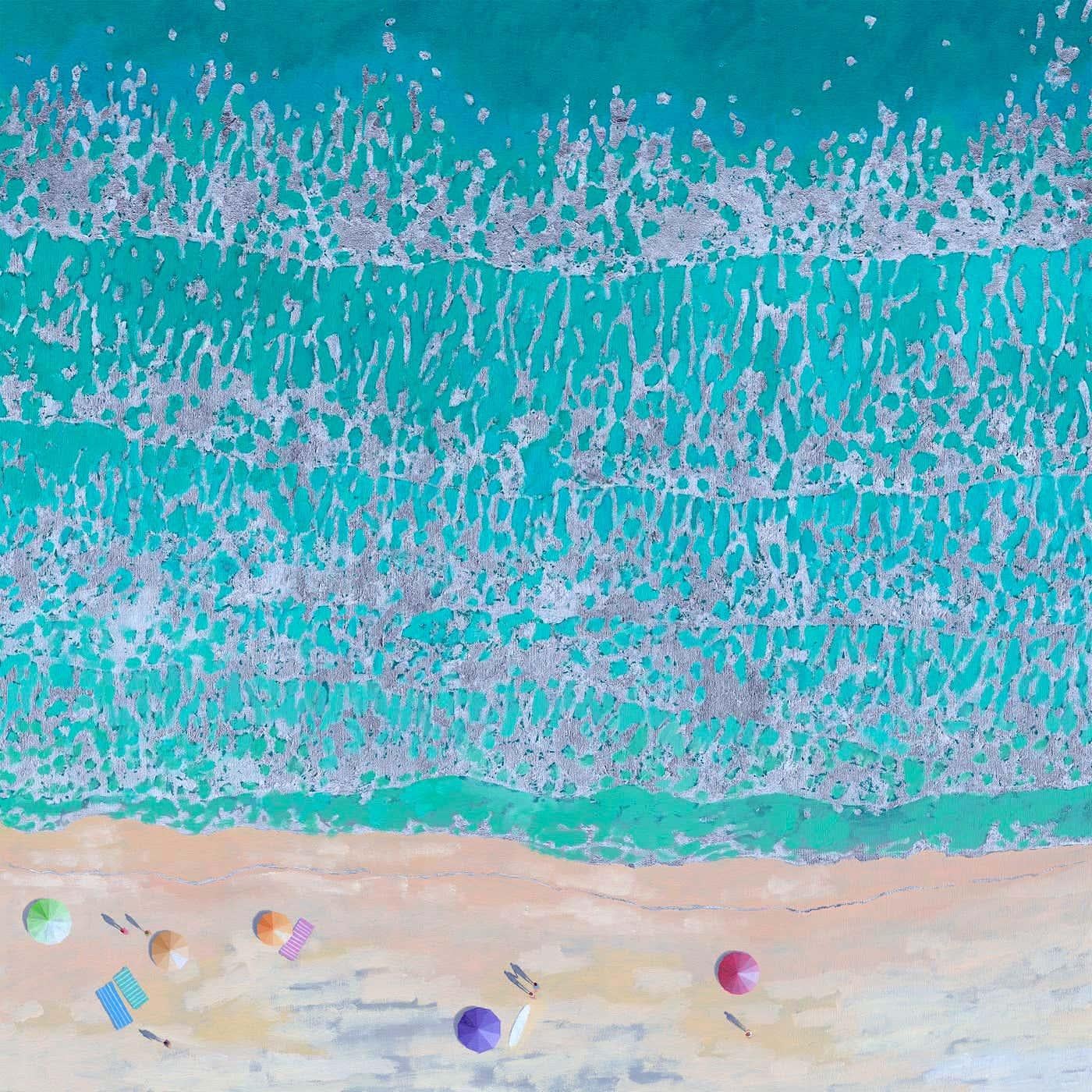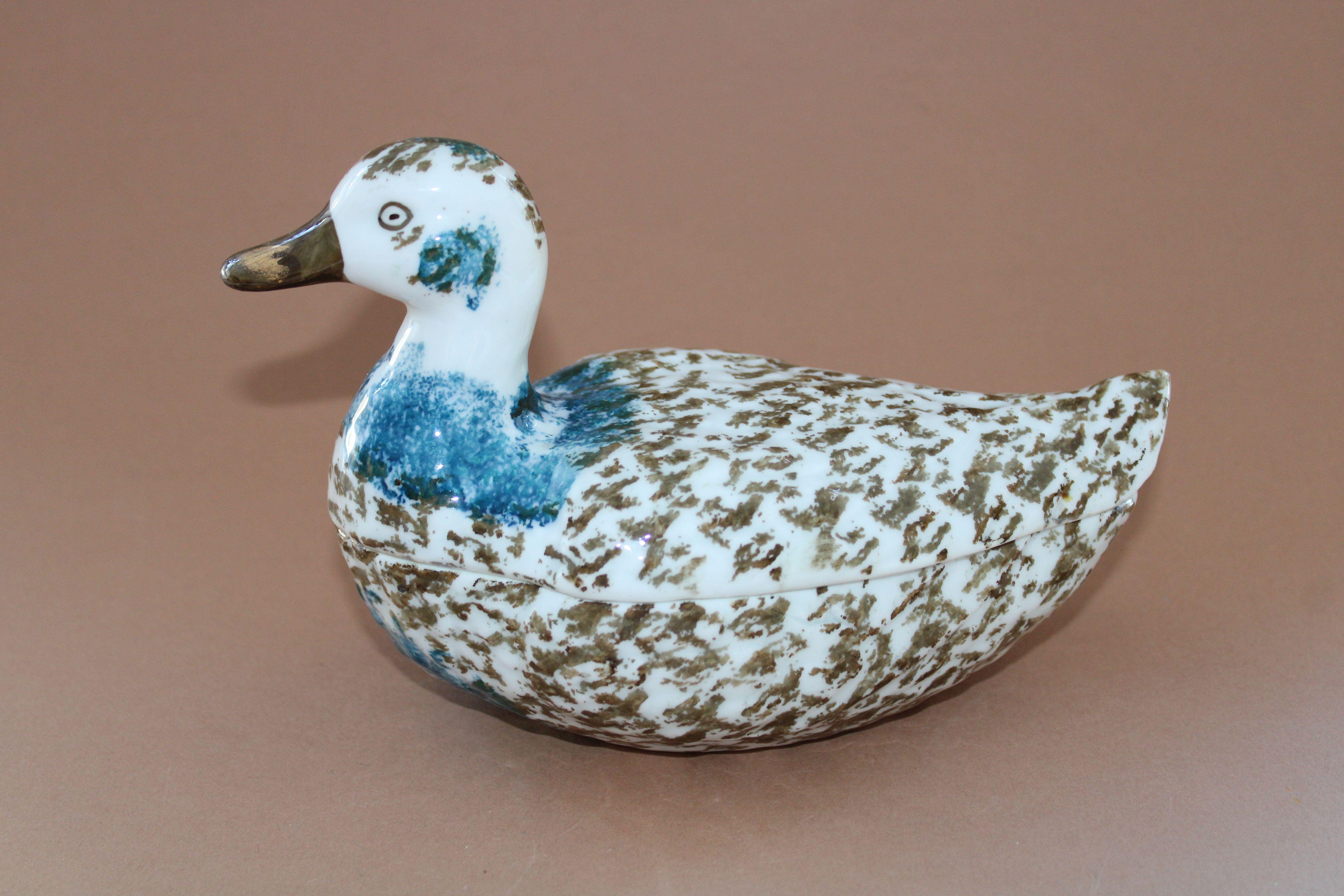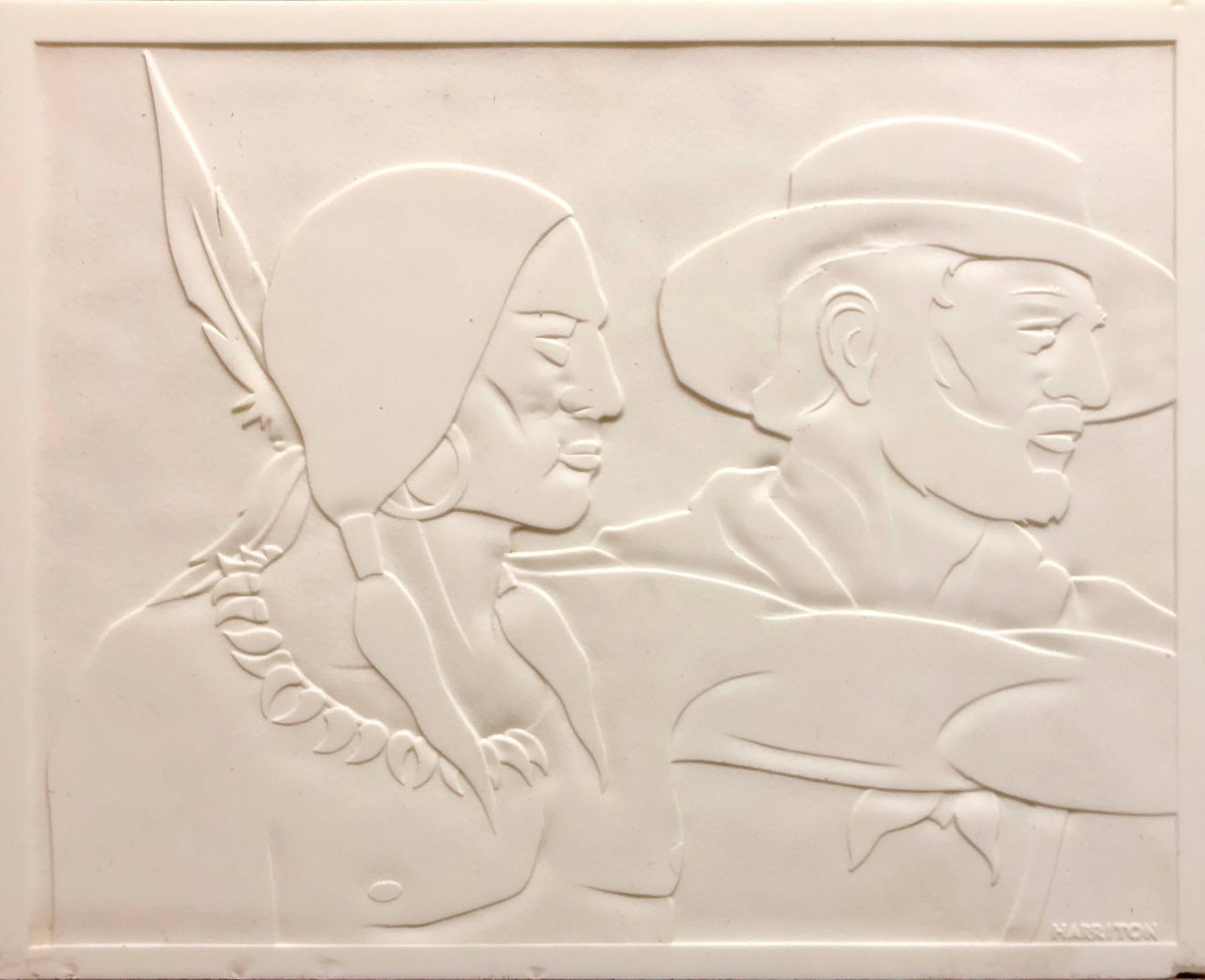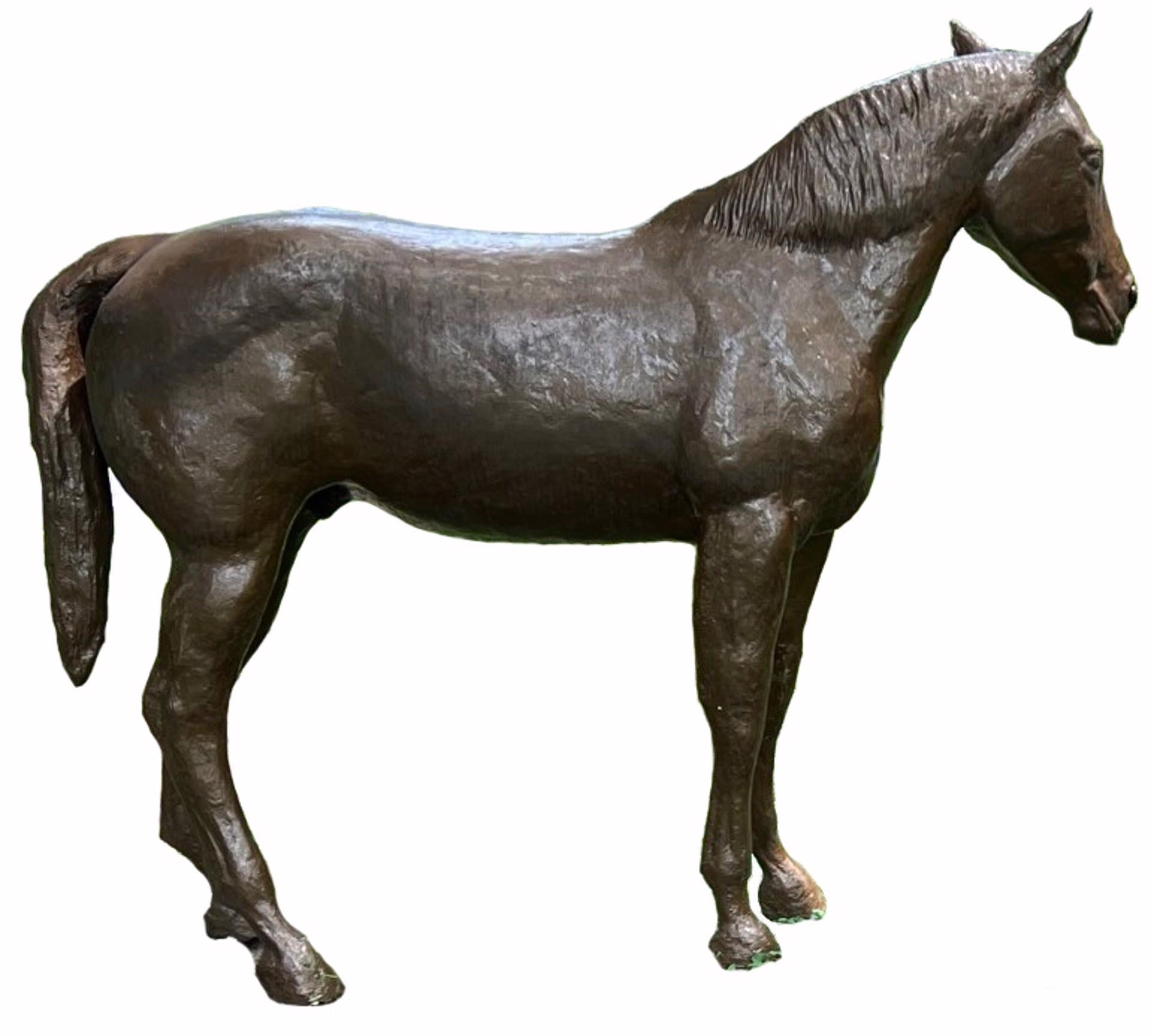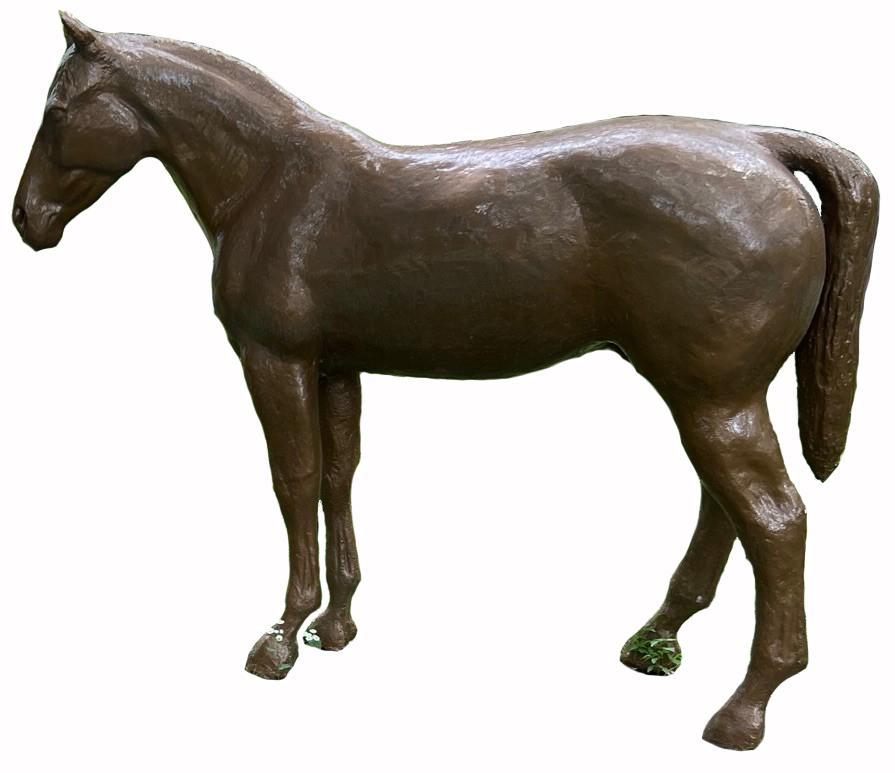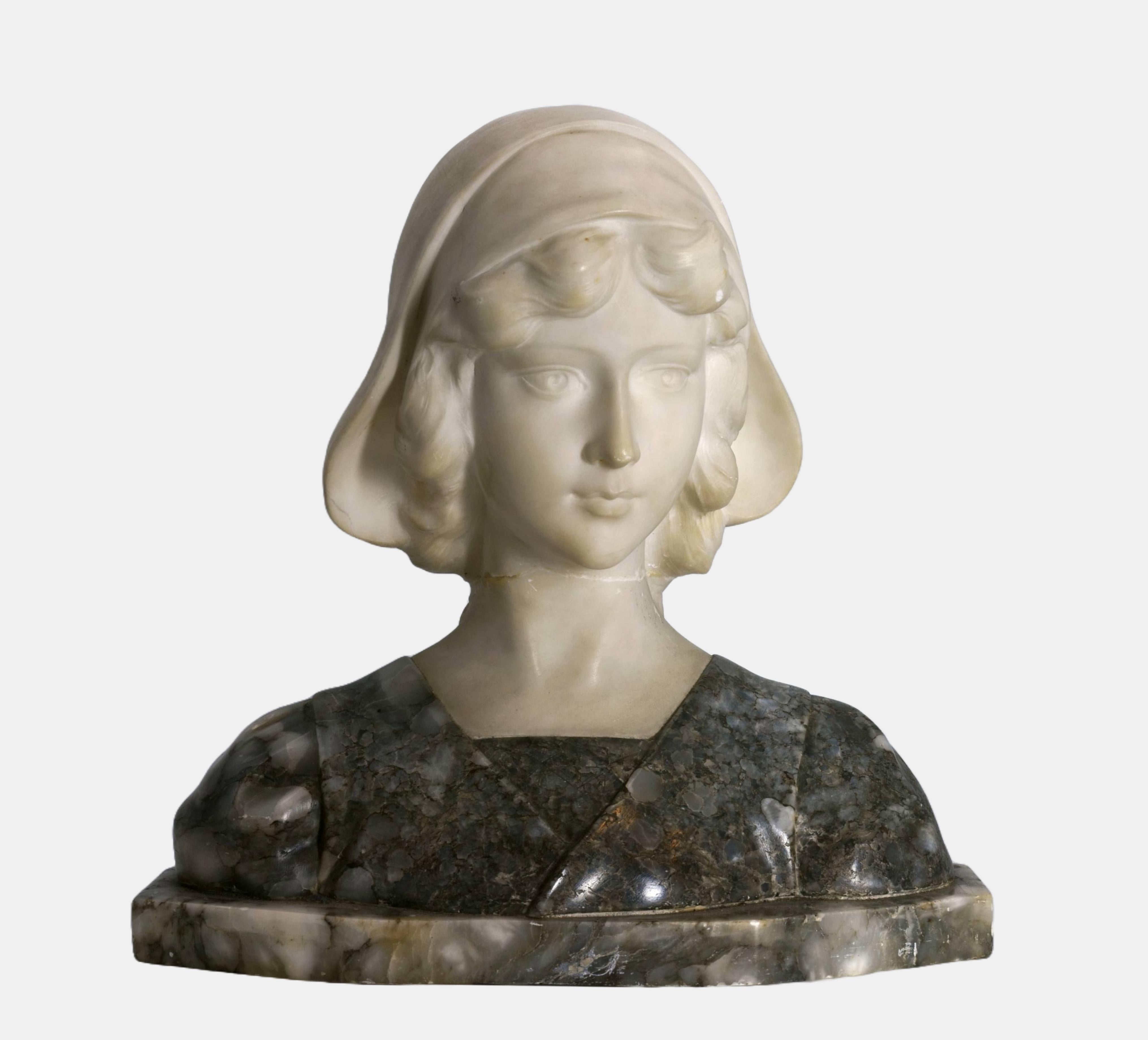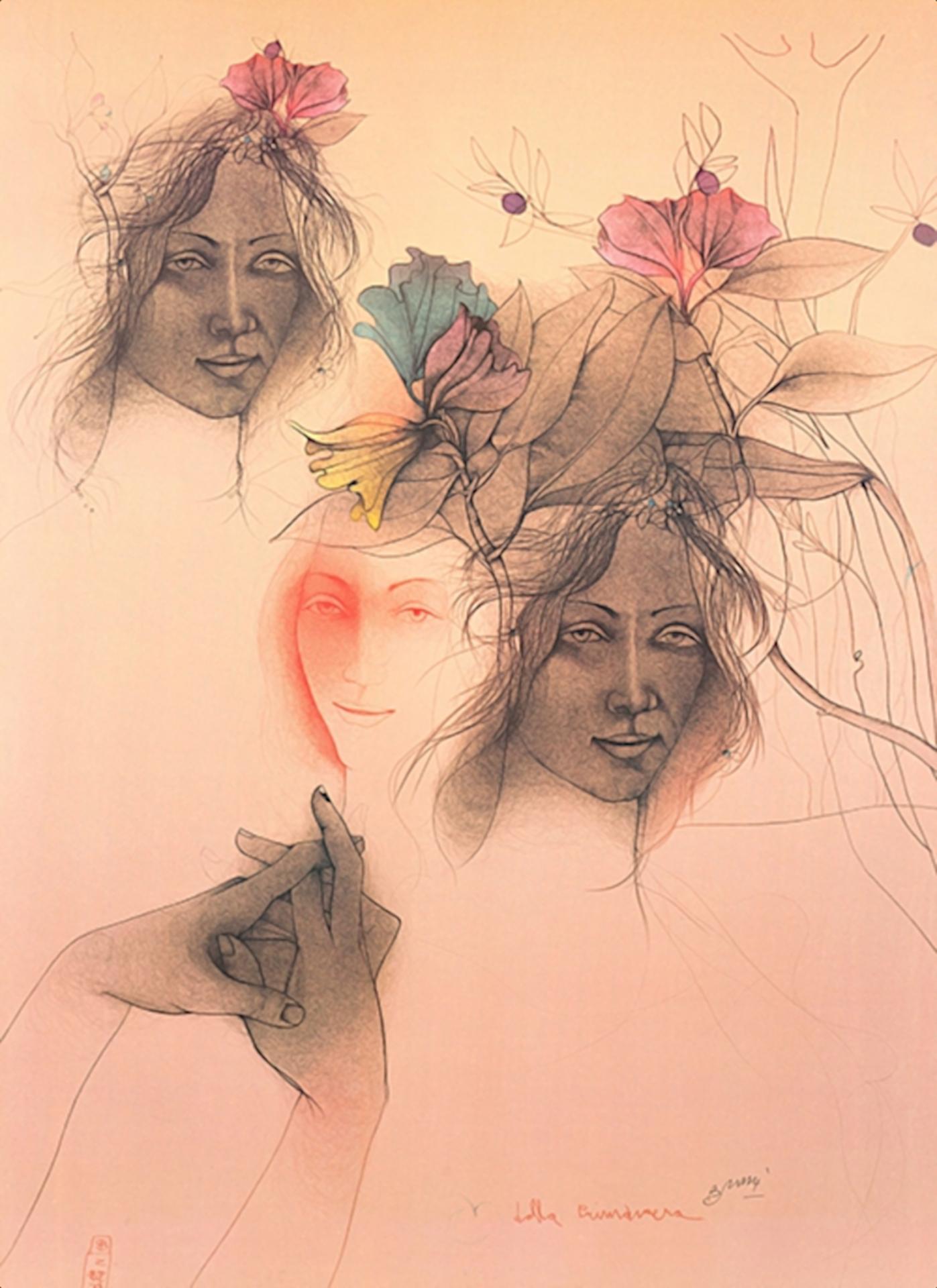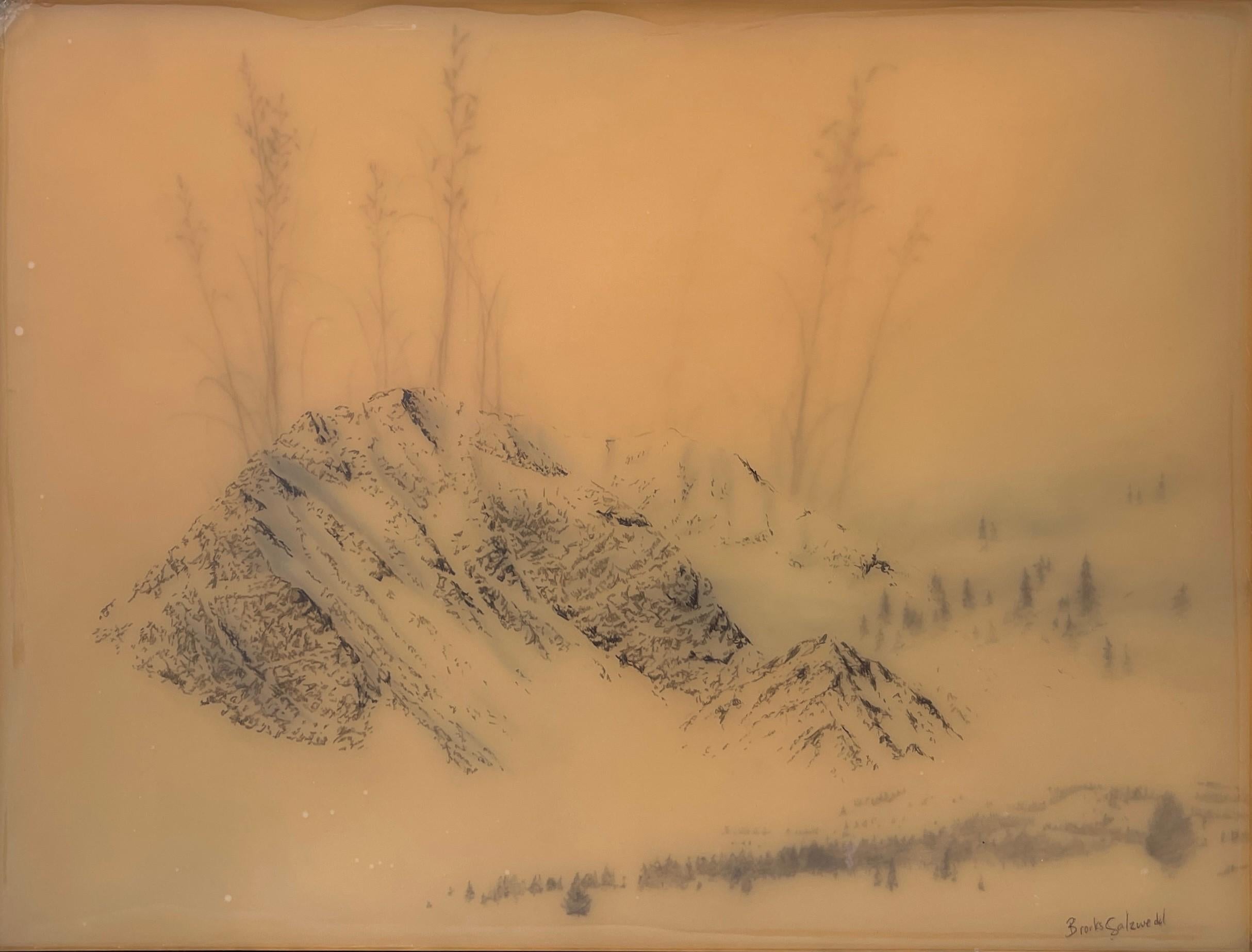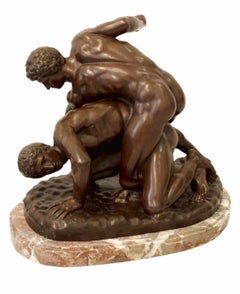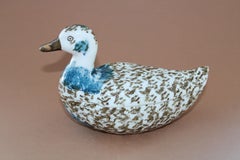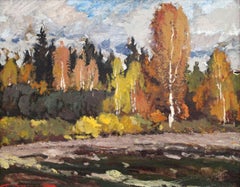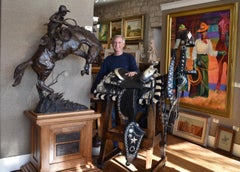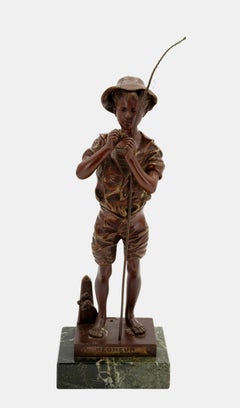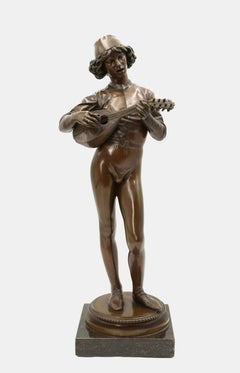Ruth. 1902. Сast iron, h 61 cm; w 27 cm molder Kuznetsov, factory KASLI
View Similar Items
Want more images or videos?
Request additional images or videos from the seller
1 of 19
Friedrich GOLDSCHEIDERRuth. 1902. Сast iron, h 61 cm; w 27 cm molder Kuznetsov, factory KASLI1902
1902
About the Item
About the Seller
5.0
Platinum Seller
Premium sellers with a 4.7+ rating and 24-hour response times
Established in 2002
1stDibs seller since 2020
188 sales on 1stDibs
Typical response time: 2 hours
Authenticity Guarantee
In the unlikely event there’s an issue with an item’s authenticity, contact us within 1 year for a full refund. DetailsMoney-Back Guarantee
If your item is not as described, is damaged in transit, or does not arrive, contact us within 7 days for a full refund. Details24-Hour Cancellation
You have a 24-hour grace period in which to reconsider your purchase, with no questions asked.Vetted Professional Sellers
Our world-class sellers must adhere to strict standards for service and quality, maintaining the integrity of our listings.Price-Match Guarantee
If you find that a seller listed the same item for a lower price elsewhere, we’ll match it.Trusted Global Delivery
Our best-in-class carrier network provides specialized shipping options worldwide, including custom delivery.More From This Seller
View AllWrestlers. Patinated bronze, h 39 cm + 4 cm pedestal, w 46 cm l 27 cm
By Ferdinand Barbedienne
Located in Riga, LV
Wrestlers. Patinated bronze, h 39 cm + 4 cm pedestal, w 46 cm l 27 cm
Ferdinand Barbedienne (1810–1892)
Category
1850s Realist Figurative Sculptures
Materials
Marble, Bronze
Kuznetsov porcelain - Butter dish duck, porcelain h 13 cm; L 19 cm; W 10 cm
Located in Riga, LV
Kuznetsov porcelain - Butter dish duck, porcelain h 13 cm; L 19 cm; W 10 cm
Kuznetsov Porcelain Factory in Riga was founded in 1841 as a factory ...
Category
Early 20th Century Realist More Art
Materials
Porcelain
Oval plate. Returning from a Bear Hunt. 19th Century. Porcelain, 4, 5x39, 5x26 cm
Located in Riga, LV
Oval plate. Returning from a Bear Hunt. 19th Century. Porcelain, 4,5x39,5x26 cm
Category
19th Century Realist More Art
Materials
Porcelain
Autumn mood. Oil on cardboard, 38 x 48, 5 cm
By Alfejs Bromults
Located in Riga, LV
Autumn mood. Oil on cardboard, 38x48,5 cm
Alfejs Bromults (1913.3.IV - 1991.11.I)
His first professional education was at National University at studies to R.Suta, J. Bine and G. S...
Category
1980s Realist Landscape Paintings
Materials
Oil, Cardboard
$813 Sale Price
20% Off
Road to the home at summer evening. 1973, oil on cardboard, 49x69 cm
By Alfejs Bromults
Located in Riga, LV
Road to the home at summer evening.
1973, oil on cardboard, 49x69 cm
Alfejs Bromults (1913.3.IV - 1991.11.I)
His first professional education was at National University at studies...
Category
1970s Realist Landscape Paintings
Materials
Oil, Cardboard
Aster flowers 1977 Paper, watercolor. 71x56.5cm
Located in Riga, LV
Aster flowers
Paper, watercolor. 71x56.5cm 1977.
"Aster Flowers" is a visually captivating and expressive watercolor painting, celebrating the beauty of nature and the artistry of the floral still life genre. Through the use of watercolors on paper, the artist has created a vibrant and enchanting composition, inviting viewers to immerse themselves in the timeless allure of colorful aster flowers in a delicate and graceful vase arrangement.
Janis Brekte...
Category
1970s Realist Still-life Paintings
Materials
Paper, Watercolor
$1,664 Sale Price
20% Off
You May Also Like
EDWARD BOHLIN 1940s 1950s SILVER MOUNTED PARADE SADDLE HOLLYWOOD WESTERN ARTIST
By Edward H. Bohlin
Located in San Antonio, TX
Edward Bohlin silver mounted parade saddle. Black Leather. Great Bohlin Stamp. Cowboy Saddle, Western Saddle. 1940s 50s one of his most desirable periods. Bohlin of Hollywood California. He made all of the saddles and other related western gear for the movies but mostly to ride in the "Tournament of Roses Parade" Rosebowl in California. The Corona was custom made using the original Corona as the sample to copy. Here is a little provenance on this saddle:
This is a rare saddle. We think there were only five made. They were marketed to Texas Buyers when in reality there wasn't a big market in Texas. The majority of these works of art were mostly purchased by California buyers.
This saddle was formerly owned by L.D. Brinkman. After his death it was acquired by a friend of mine. I purchased it from him Jan. 1, 2024, and sold it to one of my good friends and customer Jan. 3, 2024. Sadly, he recently passed away and the saddle is on the market again.
This Saddle is depicted in the Bohlin Catalog "The Lone Star Saddle"
Lloyd Donald Brinkman (1929 – July 4, 2015) was an American businessman, cattle breeder, civic leader and art collector. He was the owner of "the largest floor covering distributor in the US," and 350 pizza parlors with Gatti's Pizza. He bred Brangus cattle, and he was a significant collector of Western art.
Brinkman was born in 1929 in near Dagmar in Sheridan County, Montana. His grandparents were Danish immigrants who became homesteaders in the county.
Brinkman graduated from Pascagoula High School in Pascagoula, Mississippi. He attended Pearl River Community College, and he graduated from the University of Southern Mississippi, where he earned a bachelor's degree in marketing in 1952.
Brinkman initially worked in the flooring industry, even starting his own business in Dallas, Texas in 1960. It eventually became "the largest floor covering distributor in the US." Brinkman was also the owner of Gatti's Pizza, which operated 350 restaurants by the time he sold the business for $24 million in 2004.
Brinkman was also a breeder of Brangus cattle.
Brinkman was a co-founder of the Museum of Western Art in Kerrville. He served on the board of directors of the National Cowboy & Western Heritage Museum. He also served as the chairman of the public utility board of Kerrville, Texas. He was honored as the "Citizen of the Year" by the Kerrville Area Chamber of Commerce in 1984.
Brinkman was a collector of Western art. He owned paintings by American artists like Joe Beeler, E. Irving Couse, Frank Tenney Johnson, Gerald Harvey Jones, Robert Lougheed, Howard Terpning, and Olaf Wieghorst.
Brinkman was married seven times. He had a son, L.D. "Don" Brinkman Jr., and a daughter, Pamela Brinkman Stone.
Brinkman died on July 4, 2015.
Biography of Edward Bohlin
Edward Bohlin (1895-1980)
Edward H Bohlin Company (Established 1920)
Saddlery-Saddle Maker
1895-1980
Born in Sweden
Hollywood, CA.
Born in Sweden in 1895, Edward Bohlin ran away from home at age 15, working his way to America on a huge four-mast schooner with dreams of Buffalo Bill Cody's Wild West in his head. Ed worked cattle drives around Montana before opening his first saddle shop in Cody, Wyoming where he did rope tricks in front of his shop to draw business. He met Tom Mix while performing at the Pantages Theatre in Hollywood and Mix convinced Ed to stay and produce silver and leather items in the Los Angeles area. From his humble beginnings to his fame in Hollywood for high-end pieces, Ed crafted more than 12,000 Bohlin saddles...
Category
1940s Realist More Art
Materials
Silver
Pecheur / - Full of anticipation -
Located in Berlin, DE
Adolphe Jean Lavergne (1863-1928), Pecheur, c. 1900. Brown patinated bronze with rectangular cast plinth on a green marble base (3 cm high), total height with hinge 37 cm, width 9 cm, depth 8 cm, weight 2.9 kg, signed “Lavergne” on the plinth.
- Base with old drilling and a few oxidized areas, patina occasionally rubbed, somewhat stained in the folds.
- Full of anticipation -
This bronze is the larger, highly detailed version of the fisherman that made Parisian artist Adolphe Jean Lavergne famous. In preparation for fishing, the boy prepares his rod before heading out to sea. The attachment of the iron ring and the rope behind him suggest a quay wall and a boat moored there. However, the depiction is entirely focused on the actual action of the young fisherman: With equal skill and concentration, he bends a hook to connect it to the fishing line. The contrast with his casual clothing, the loose-fitting trousers, the open shirt with its "wild" folds, and, last but not least, the sun hat boldly perched on his neck, reinforces the impression of the attentive care with which he goes about his work. His gaze makes him appear absorbed, as if he has forgotten the world around him and yet he is visibly filled with anticipation of fishing.
GERMAN VERSION
Adolphe Jean Lavergne (1863-1928), Pecheur, um 1890. Braun patinierte Bronze mit rechteckiger gegossener Plinthe auf grünem Marmorsockel (3 cm Höhe), Gesamthöhe mit Angel 37 cm, Breite 9 cm, Tiefe 8 cm, Gewicht 2,9 kg, auf der Plinthe mit „Lavergne“ signiert.
- Sockel mit alter Bohrung und wenigen oxidierten Stellen, Patina mitunter berieben, in den Falten vereinzelt etwas fleckig.
- Voller Vorfreude -
Die Bronzefigur ist die größere äußerst detaillierte Ausführung des Fischers, mit dem der Pariser Künstler Adolphe Jean Lavergne bekannt geworden ist. In Vorbereitung auf das Fischen präpariert der Junge die Angel...
Category
1890s Realist Figurative Sculptures
Materials
Bronze
$665 Sale Price
20% Off
Florentine singer / - The Renaissance of the Renaissance -
By Paul Dubois
Located in Berlin, DE
Paul Dubois (1829 Nogent-sur-Seine - 1905 Paris), Florentine singer, 1865. Light brown patinated bronze with cast round plinth mounted on a square marble base (3.5 cm high). Total height 53 cm. Bronze dimensions: 49.5 cm (height) x 20 cm (length) x 10 cm (width), weight 5.6 kg. Inscribed on the plinth "P.[aul] DUBOIS", dated "1865", with the foundry's mark "F. BARBEDIENNE FONDEUR" and the signet "REDUCTION MECANIQUE A. COLLAS".
- Patina very occasionally darkened, lute with loss of one tuning peg, otherwise in excellent condition.
- The renaissance of the Renaissance -
The bronze is a precisely executed and masterfully cast contemporary reduction of Paul Dubois 155 cm tall masterpiece "Florentine Singer", which is exhibited in the Musée d'Orsay and for which the artist was awarded the Medal of Honor at the Paris Salon in 1865. The work acted as a beacon, and was followed by a plethora of depictions of juveniles.
Inspired by Donatello and Luca della Robbia, but also by painters such as Piero della Francesca, Benozzo Gozzoli, and Pinturicchio, the "Florentine Singer" is not an epigonal work that pays homage to a vanished era, but a successful attempt to draw vitality from the art of the past and thus give it new life.
The effect of vitality is the core of Italian Renaissance art theory. In order to fulfill itself as art, art had to appear like nature. This naturalism also characterizes the "Florentine Singer". The young man appears to have been taken from life, which is reinforced by the momentary nature of his action. He has just struck a now fading chord. In addition, the natural appearance is enhanced by the detailed shaping of the figurative details, such as the laces with the slightly curved leather of the shoes, the belt buckle, or the ornamentation on the body of the lute. Even the fingernails are clearly defined. Unlike the Renaissance, however, the effect of liveliness here is not based on the "discovery" of nature and the human body, but primarily on the rediscovery of the art of the Quattrocento. The liveliness of the artwork is therefore at the same time a revitalization of this art, so that we can speak of a Renaissance of the Renaissance, just as the Pre-Raphaelites in England at the same time transferred the Quattrocento to contemporary art.
Dubois takes on the most difficult of all subjects, the depiction of singing through silent sculpture. He was preceded in this by Luca della Robbia and Donatello with their pulpits of singers created in the 1430s in the Museo dell'Opera del Duomo in Florence. Compared to these works, the physiognomy of Dubois singer is far less animated, yet he also depicts singing in a convincing manner. He uses the whole body. He takes the ancient contrapposto, which was essential to Renaissance sculpture, and transforms the standing leg-playing posture into a late medieval S-swing, giving the body an elegant beauty and at the same time setting it in melodic motion. In the equally elegant finger position, the music is expressed in a much more literal way with the beating of the lute. Finally, the musicality of the sculpture culminates in the face with the mouth open to sing.
Through the act of singing, which is a great challenge to the artistic will to depict perfect beauty, the gracefulness of the classical face is not diminished, but enhanced. Starting from the face with the singing mouth and the gaze absorbed by the sounds, the inner vitality spreads, giving the bronze sculpture an intense aura, enhanced by the music. Dubois transfers the beauty of the Renaissance to the musical, sublimating the visible sculpture to the invisible of music.
He took up the challenge of transcending the Renaissance with the Renaissance, thus responding to the Querelle des Anciens et des Modernes, which arose at the end of the 17th century around the French Academy and remained virulent into the 19th century, in which antiquity was regarded either as an unattainable ideal or as a standard to be surpassed. With his work, Dubois proved that the Renaissance, which had championed the art of the ancients, could lead to a new renaissance of art.
About the artist
Paul Dubois' great-uncle was the famous French Baroque sculptor Jean-Baptiste Pigalle, in whose footsteps the talented great-nephew followed. When he debuted at the Paris Salon in 1858, he signed his work "Dubois-Pigalle". At his father's request, however, he first studied law before devoting himself to sculpture under the tutelage of François Christophe Armand Toussaint in 1856 and entering the École des Beaux-Arts in 1858. From 1859 to 1863, he lived in Rome and traveled to Naples and Florence. Inspired by Florentine art of the quattrocento, Dubois initiated a school-forming neo-Florentine style that combined the elegantly simple forms of youthful grace with a precise wealth of detail.Two purchases by the French state (“envois de Rome”) were made during his stay in Rome, which brought him recognition in Paris. After his return there, he quickly became an internationally sought-after artist.
Dubois was also active as a creator of monuments. His most famous work is the equestrian statue of Joan of Arc (1896) on the forecourt of Reims Cathedral. He was also a sought-after portraitist who produced around 50 busts and - Dubois was also a passionate painter - around 100 portraits in oil.
From 1873 to 1878 he was curator of the Museum du Luxembourg, in 1876 he became a member of the Institut de France and from 1878 to 1905 he was director of the École des Beaux-Arts.
In 1865, Dubois was awarded the Paris Salon Medal of Honor for his “Florentine Singer”. In 1867 he became Chevalier, in 1874 Officier, in 1886 Commandeur of the Légion d'honneur, which awarded Dubois the Grande Croix in 1896.
Selected Bibliography
Stole, Elmar: Paul Dubois. In: Saur. Allgemeines Künstlerlexikon, vol. 30, Munich - Leipzig 2001, pp. 677-678.
GERMAN VERSION
Paul Dubois (1829 Nogent-sur-Seine - 1905 Paris), Florentinischer Sänger, 1865. Hellbraun patinierte Bronze mit gegossener runder Plinthe auf quadratischem Marmorsockel montiert (3,5 cm Höhe). Gesamthöhe 53 cm. Maße der Bronze: 49,5 cm (Höhe) x 20 cm (Länge) x 10 cm (Breite), Gewicht 5,6 kg. Auf der Plinthe mit „P.[aul] DUBOIS“ bezeichnet, auf „1865“ datiert, mit dem Gießereistempel „F. BARBEDIENNE FONDEUR“ und dem Signet „REDUCTION MECANIQUE A. COLLAS“ versehen.
- Patina sehr vereinzelt nachgedunkelt, Laute mit Verlust eines Stimmwirbels, ansonsten ausgezeichnet erhalten.
- Die Renaissance...
Category
1860s Realist Figurative Sculptures
Materials
Bronze
$4,161 Sale Price
20% Off
Winter Fireworks- Original impressionism seascape oil painting- modern art
Located in London, Chelsea
Experience the magic of the season with "Winter Fireworks," an evocative original seascape painting by the esteemed artist Lenny Cornforth. Crafted in oil on canvas with a contempora...
Category
21st Century and Contemporary Realist Landscape Paintings
Materials
Silver
Pastel Umbrellas-original impressionism seascape oil painting-contemporary Art
Located in London, Chelsea
"Pastel Umbrellas" by Lenny Cornforth is a captivating original seascape painting that exudes tranquility and charm. Created with oil and silver leaf on canvas in the style of contem...
Category
21st Century and Contemporary Realist Landscape Paintings
Materials
Silver
Rare Milk Glass Carved Sculpture Panel Cowboy Indian WPA Artist Americana
By Abraham Harriton
Located in Surfside, FL
This is a carved glass panel. I belive this is milk glass. it is a classic Americana scene of a cowboy or frontier trapper and an Indian or Native American with a feathered headdress...
Category
Mid-20th Century Realist Figurative Sculptures
Materials
Glass
Recently Viewed
View AllMore Ways To Browse
Black And White Figurative Photos
The Rock Images
Slim Aarons Sun
Catalogue Raisonne
New England Print
Slim Aarons London
Oil Exploration
Black Watering Can
Old Master Oil
Paintings Of White Flowers
Avant Garde Painting
Conversation Painting
Paris Street Life
Artwork With Tree
New River Painting
Hollywood Films
Blue Art Geometric
Nature Plates

